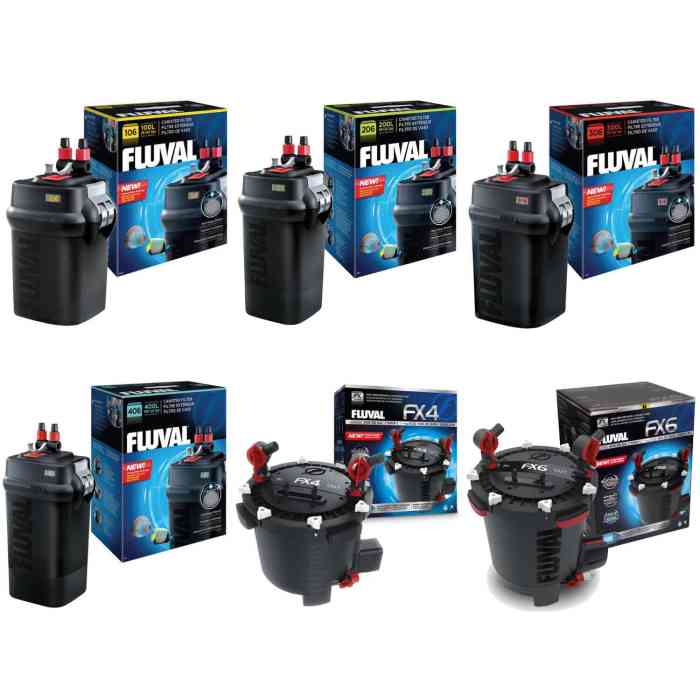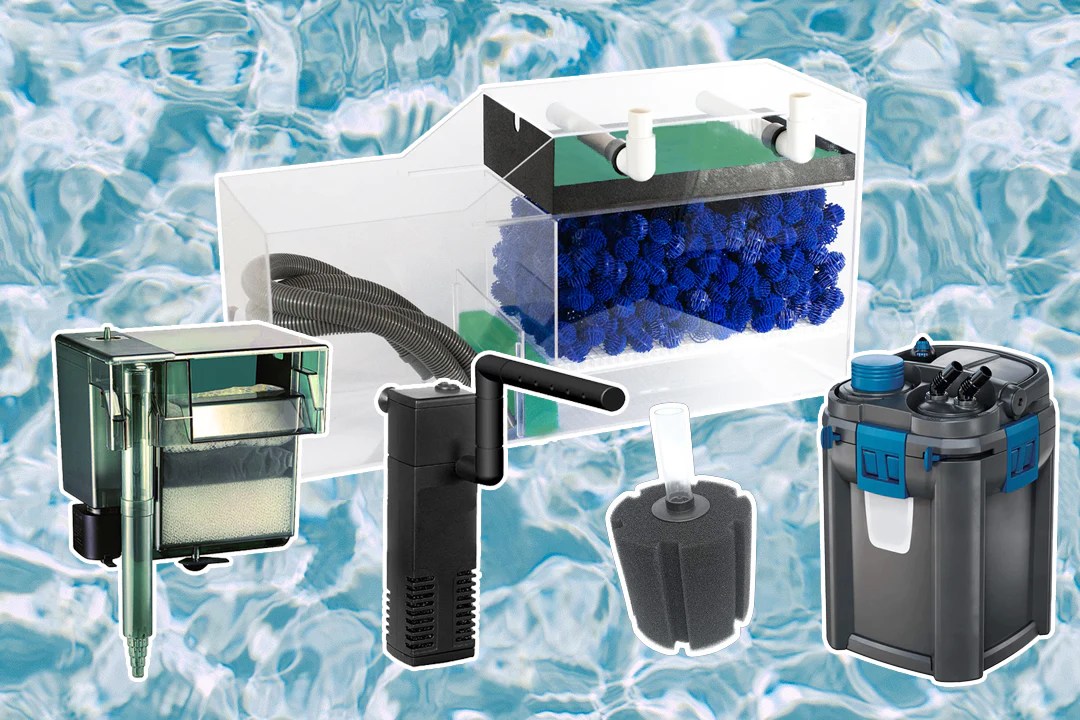Guide to Selecting the Best Aquarium Filter: Navigating the world of aquarium filters can feel overwhelming, with a plethora of options and technical jargon. But fear not, this guide will equip you with the knowledge to choose the perfect filter for your aquatic companions, ensuring a healthy and thriving environment.
From understanding the different filter types to considering key factors like flow rate and filtration media, we’ll delve into the intricacies of aquarium filtration, empowering you to make informed decisions. Whether you’re a seasoned aquarist or just starting your journey, this comprehensive guide will provide the insights you need to select the best filter for your tank, ensuring crystal-clear water and happy fish.
Understanding Aquarium Filter Types

Aquarium filters are essential for maintaining a healthy and thriving aquatic ecosystem. They remove waste, debris, and harmful substances, ensuring the well-being of your fish and plants. Choosing the right filter for your aquarium depends on various factors, including tank size, fish species, and your personal preferences.
Types of Aquarium Filters
The type of aquarium filter you choose depends on your specific needs and the size of your tank. There are four main types of aquarium filters: hang-on filters, canister filters, internal filters, and sponge filters.
- Hang-on filters, as the name suggests, are designed to hang on the edge of your aquarium. They are typically small and compact, making them suitable for smaller tanks. These filters are easy to install and maintain, with a simple design that includes a motor, a filter cartridge, and an outlet for water flow.
Popular examples include the AquaClear Power Filterand the Fluval C Series.
- Canister filtersare powerful and efficient filtration systems that are placed outside the aquarium. They have a large capacity for filter media, allowing for excellent water clarity and biological filtration. Canister filters are suitable for larger tanks and are considered to be the most advanced type of aquarium filter.
Popular examples include the Eheim Classic Canister Filterand the Fluval FX Series.
- Internal filtersare submerged inside the aquarium and are often used in smaller tanks. These filters are relatively inexpensive and easy to install. They typically feature a small motor and a filter cartridge, and some models come with adjustable flow rates. Popular examples include the Aqueon QuietFlow Internal Filterand the Tetra Whisper Internal Filter.
Choosing the right aquarium filter is crucial for maintaining a healthy environment for your fish, and that includes providing them with the right diet. While you’re busy researching filters, you might wonder about the safety of certain foods, like carrots.
Can Goldfish Eat Carrots: A Guide to Safe Veggie Treats explores the answer, helping you ensure your fish are getting the best nutrition. Once you’ve got your filter and diet figured out, you’ll be well on your way to creating a thriving underwater ecosystem.
- Sponge filtersare simple and efficient filters that consist of a porous sponge material. They are often used in breeding tanks or for smaller aquariums. Sponge filters provide excellent biological filtration and are relatively low-maintenance. Popular examples include the Marineland Penguin BioWheel Filterand the Tetra Whisper Sponge Filter.
Comparing and Contrasting Filter Types
Each type of aquarium filter has its own advantages and disadvantages.
| Filter Type | Advantages | Disadvantages |
|---|---|---|
| Hang-on Filters | Easy to install and maintain; compact size; suitable for smaller tanks; affordable. | Limited filtration capacity; can be noisy; may not be suitable for larger tanks. |
| Canister Filters | High filtration capacity; excellent water clarity; suitable for larger tanks; quiet operation. | More expensive; require more space; can be more challenging to install and maintain. |
| Internal Filters | Easy to install and maintain; affordable; suitable for smaller tanks; can be easily hidden. | Limited filtration capacity; can be noisy; may not be suitable for larger tanks. |
| Sponge Filters | Excellent biological filtration; low-maintenance; quiet operation; affordable. | Limited mechanical filtration; can be less efficient for removing fine particles. |
Additional Considerations

When selecting an aquarium filter, there are additional factors to consider beyond the type of filter. These factors can significantly impact the overall health and well-being of your aquarium ecosystem.
Multiple Filters for Larger Tanks
Using multiple filters in larger tanks offers several advantages.
- Enhanced Water Circulation:Multiple filters create stronger water currents, ensuring better oxygen distribution throughout the tank and reducing the risk of stagnant areas.
- Improved Filtration Capacity:Multiple filters increase the overall filtration capacity, allowing for a greater volume of water to be processed and purified.
- Redundancy:Having multiple filters provides a backup system in case one filter fails. This ensures continuous filtration and minimizes the risk of water quality deterioration.
Filtration and Water Quality, Guide to selecting the best aquarium filter
Aquarium filters play a crucial role in maintaining optimal water quality.
- Waste Removal:Filters remove waste products such as fish excrement, uneaten food, and decaying plant matter. These waste products can release harmful ammonia and nitrite into the water, posing a threat to fish health.
- Biological Filtration:Beneficial bacteria colonize filter media, converting toxic ammonia and nitrite into less harmful nitrate. This process is essential for maintaining a healthy and balanced aquarium ecosystem.
- Mechanical Filtration:Filters remove larger debris, such as fish flakes, plant fragments, and other suspended particles. This prevents the buildup of organic matter, which can cloud the water and impede visibility.
- Chemical Filtration:Some filters incorporate activated carbon or other chemical media to remove dissolved impurities, such as chlorine, heavy metals, and medications.
Enhancing Filtration with Accessories
Adding accessories can further enhance filtration and improve water quality.
- UV Sterilizers:UV sterilizers use ultraviolet light to kill harmful bacteria, algae, and parasites. They are particularly beneficial for preventing outbreaks of diseases and maintaining crystal-clear water.
- Protein Skimmers:Protein skimmers are primarily used in saltwater aquariums. They remove organic waste and dissolved proteins from the water, reducing the buildup of organic matter and improving water clarity.
Final Conclusion: Guide To Selecting The Best Aquarium Filter

Selecting the right aquarium filter is a crucial step in creating a thriving underwater ecosystem. By understanding the various filter types, key considerations, and maintenance practices, you can ensure optimal water quality and the well-being of your aquatic inhabitants. Remember, investing in a high-quality filter is an investment in the health and longevity of your aquarium, allowing you to enjoy the beauty and tranquility of your underwater world for years to come.